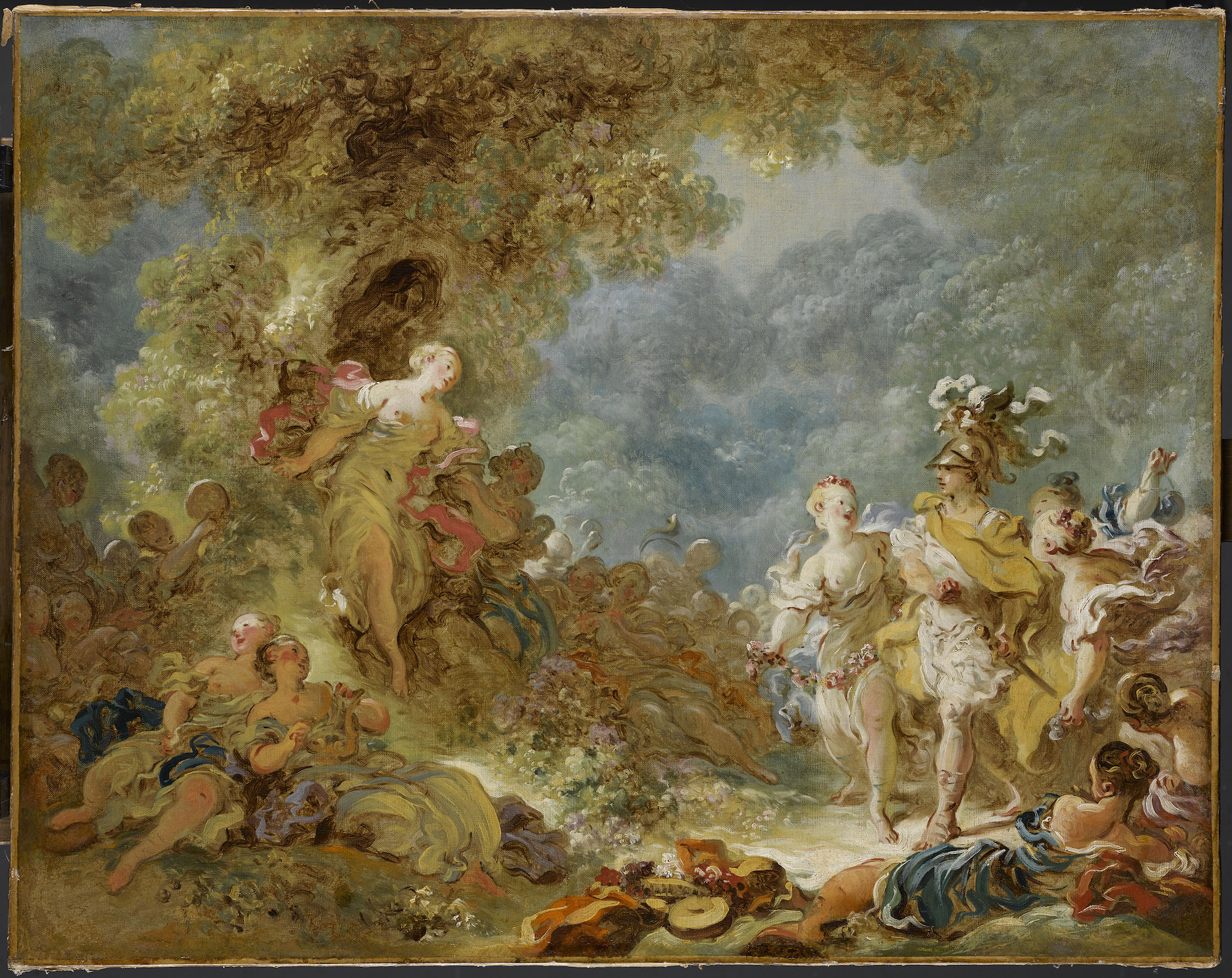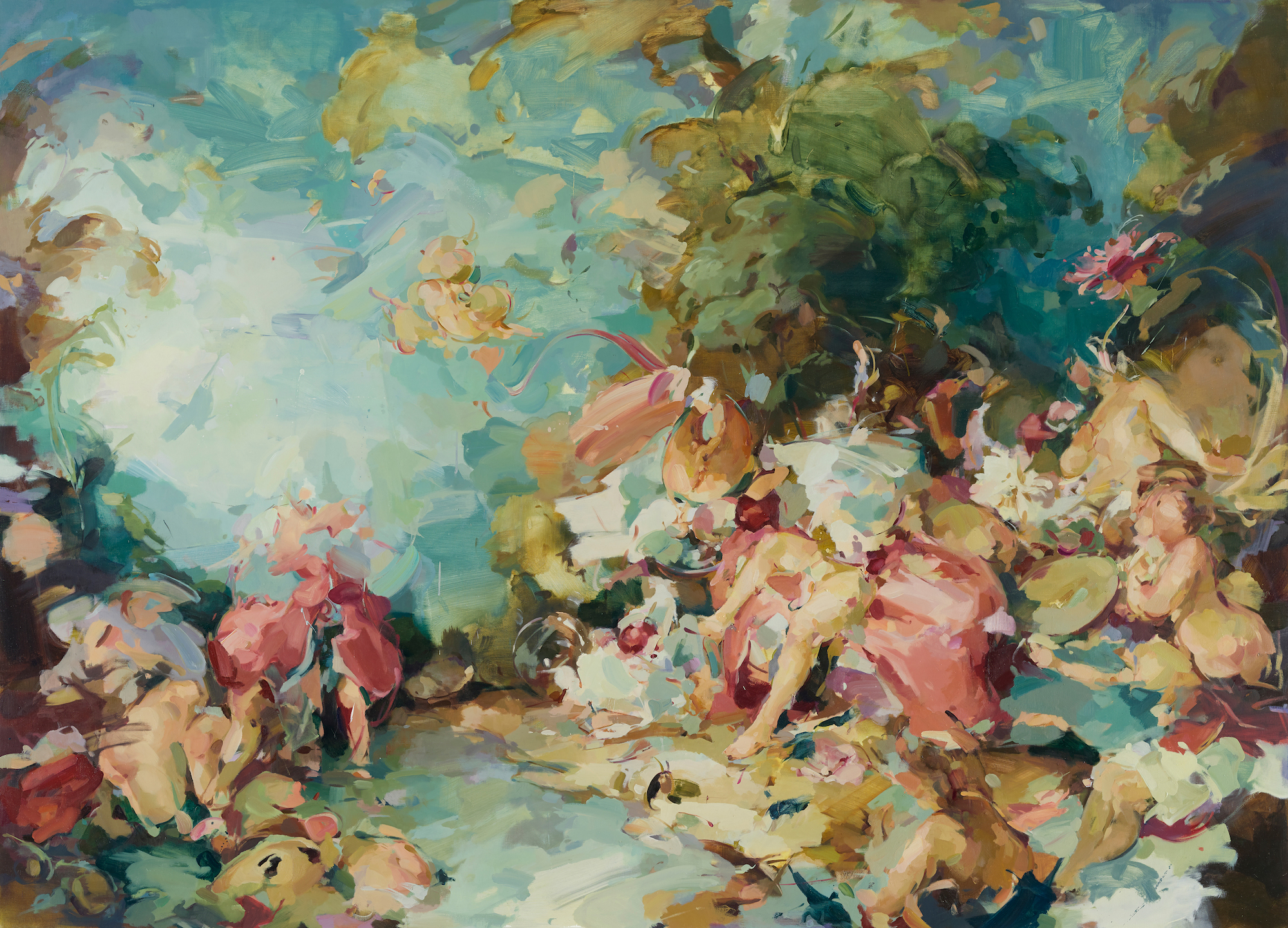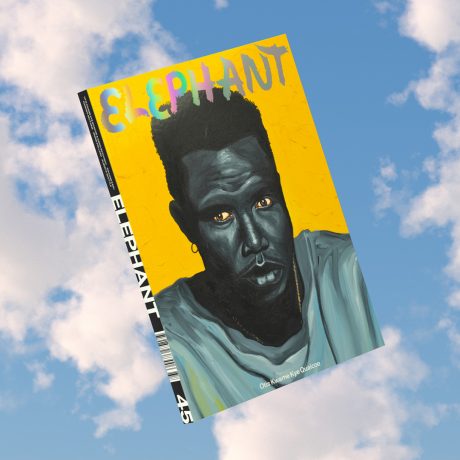
Under the Influence invites artists to discuss a work that has had a profound impact on their practice. In this edition Flora Yukhnovich, whose paintings filter the Rococo though a swirl of pop-culture references, talks about what she learned from the work of Jean-Honoré Fragonard.
I first saw Fragonard’s Renaud et Armide (Rinaldo and Armida) in the Louvre about two years ago. I was so taken with the ease and speed with which he had painted it. I snapped tons of photographs, even though it didn’t immediately strike me as something that connected to my own work. I didn’t know anything about the story of Rinaldo and Armida—which comes from Torquato Tasso’s epic Jerusalem Delivered (1581)—until I read about it in Mary Sheriff’s book Enchanted Islands (2018). She explains that the tale is set in a magical “nowhere” space, where gender expectations are reversed. The soldier Rinaldo becomes somewhat effeminate as he falls in love with the powerful Armida.
It is rare for me to fall in love with a picture because of its narrative as opposed to the materiality, but everything I loved about the work came to life through the couple’s story. Once I knew about the context, I was drawn back to the painting over and over again. It is a landscape that has been conjured by a woman, so Fragonard paints as if the female figures are part of their natural surroundings, like one living organism. In another excellent book called The Painter’s Touch (2018), Ewa Lajer-Burcharth discusses the new ideas of the 18th century, such as the scientific discoveries that led to an understanding of nature as a continuous organism: a force of regeneration and creation. She thinks that Fragonard was looking at diagrams of wombs and female anatomy and built his landscapes around that. I love the idea that his work was metaphorically ‘female’ in its construction.

“Fragonard was looking at diagrams of wombs and female anatomy and built his landscapes around that. I love the idea that his work was metaphorically ‘female’ in its construction”
Fragonard communicates meaning through the touch of the paint. As opposed to simply depicting a narrative, he uses it both conceptually and abstractly. Paint is effectively a base substance that you pull form out of, creating a whole world from that one material. As a painter, I have come to understand just how difficult it is to suggest a body through only a few brushstrokes, which brings about a whole new understanding of Fragonard’s skills.
I tend to imagine works of art are always huge. I thought the woman in Fragonard’s The Swing (c1767) was life-sized, which is probably the fault of Disney’s Frozen (Anna jumps in front of a massive pastiche during one of her songs). It was a shock to discover that in reality it is so much tinier. The scale of Renaud et Armide is similar to an A1 piece of paper, which makes it all the more incredible that the brushstrokes are so loose and full of energy. I usually work big because I love how immersive it feels, but it has also become a bit of a crutch. It is a habit I’m trying to break. When you’re moving your whole body, that physical freedom comes across in the paint very easily. It is much harder to replicate on a smaller scale.
A lot of people get the sense that my work is influenced by something ‘old’. Someone might point to Michelangelo, which isn’t wrong because eighteenth-century artists were looking back at him. I like the idea that my paintings can act as signposts to art history, but equally you might simply be drawn in by a seductive scene, much like a Fragonard. There’s a notion of sensation that he evokes so brilliantly, which is something I’m always hoping to capture.
As told to Louise Benson, Elephant’s deputy editor






